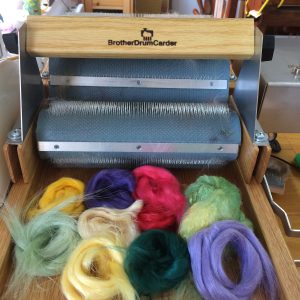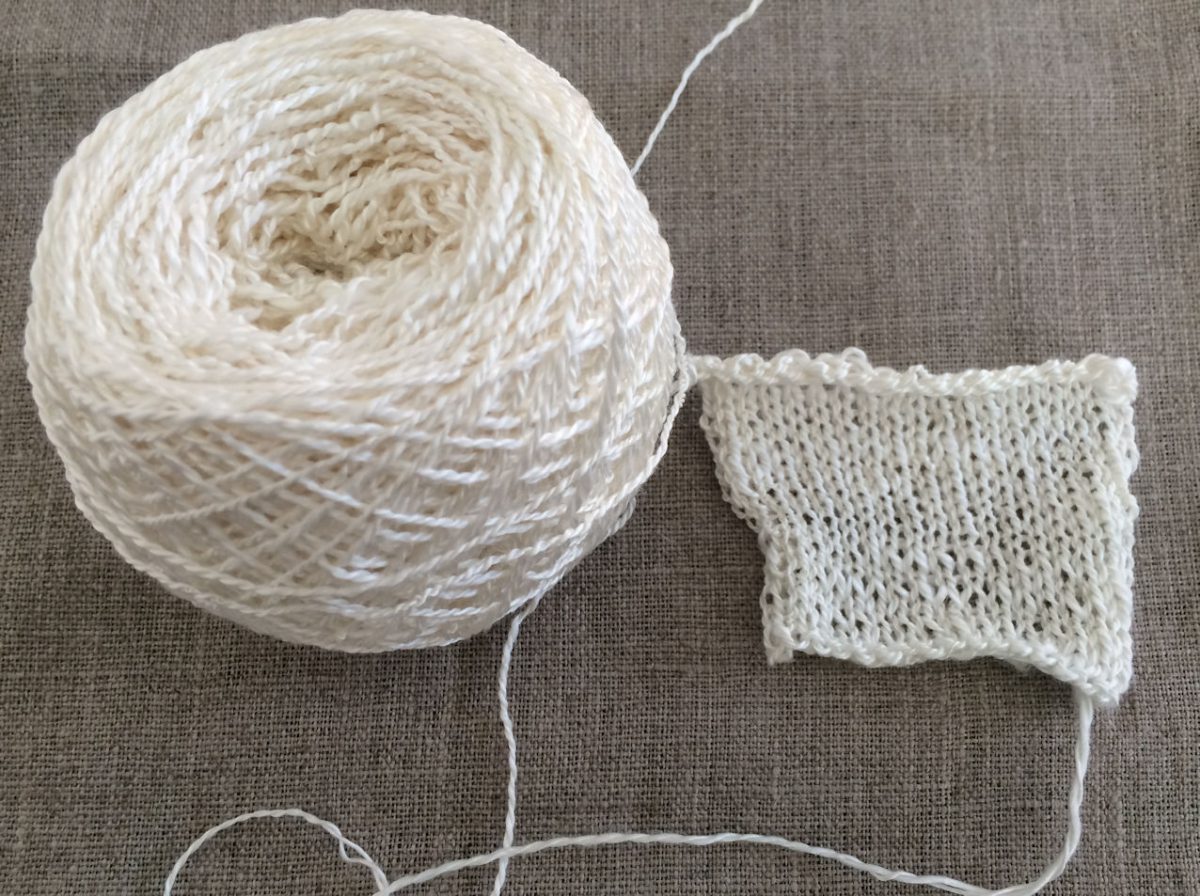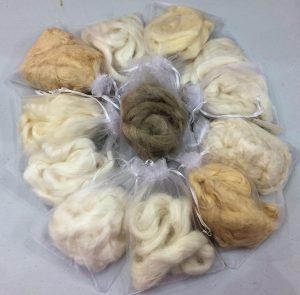When I create new yarn colours I like to use inspiration from my garden and my world around me. Today the lovely Monet Petunias are in full bloom, with wonderful, soft, pastel shades, just perfect for a new roving and yarn colourway.
When I design the yarns, I also think about the different fibre characteristics of the various flora fibres and combine them together as I card the unique blends.
In this hot weather, it is wonderful to both spin, knit and wear flax or linen. Flax is cool and crisp, but can also be a bit rough, until it has been gently softened through many washes.
Adding in some other flora fibres that have more silkiness, softness and drapability help to enhance the properties of the hand spun yarn.
Bamboo, made from cellulose pulp is spun into soft and silky filaments. Bamboo is cool to wear as it has high water absorbency, and also has antibacterial properties.
Soya silk, is a protein fibre made from the by-product leftovers of soya milk. Soya is soft, shiny and very silky to the touch, adding a touch of silk elegance, without the silk worm.


Please contact me if you would like a custom order of this summertime vegan roving. If you are not a handspinner, I would be happy to also custom spin some for you.
If you would like to try making your own flora blend yarns, you can find the fibres in my Web Shop.
I will also be creating more one-of-a-kind fibre blends that you can find in my online shops on Etsy, Folksy and Artyah.
Spin Flora on Etsy
Paivatar on Folksy
Spin Flora on Artyah.


















